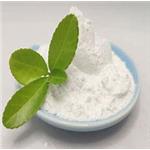- Propyleneglycol alginate
-

- $6.00 / 1KG
-
2024-04-15
- CAS:9005-37-2
- Min. Order: 25KG
- Purity: More than 99%
- Supply Ability: 2000KG/MONTH
|
| | Propyleneglycol alginate Basic information |
| Product Name: | Propyleneglycol alginate | | Synonyms: | femanumber2941;kelcoloid;kelcoloidhvf;manucolestere/rep;propyleneglycolalginateester;1,2-Propanediol alginate;PROPYLENEGLYCOLALGINATE,HIGHVISCOSITY;PROPYLENEGLYCOLALGINATE,LOWVISCOSITY | | CAS: | 9005-37-2 | | MF: | (C9H14O70n | | MW: | 0 | | EINECS: | | | Product Categories: | stabilizer | | Mol File: | Mol File | ![Propyleneglycol alginate Structure]() |
| | Propyleneglycol alginate Chemical Properties |
| Boiling point | 886.32°C (rough estimate) | | density | 1.2096 (rough estimate) | | refractive index | 1.7040 (estimate) | | FEMA | 2941 | PROPYLENE GLYCOL ALGINATE | | solubility | Soluble in dilute organic acids and water, forming
stable, viscous, colloidal solutions at pH 3. Depending upon the
degree of esterification, propylene glycol alginate is also soluble
in aqueous ethanol/water mixtures containing up to 60% w/w of
ethanol (95%). | | Odor | bland | | PH | pH(1%, 25℃):3.5~4.5 | | CAS DataBase Reference | 9005-37-2 | | EPA Substance Registry System | Propylene glycol alginate (9005-37-2) |
| | Propyleneglycol alginate Usage And Synthesis |
| Chemical Properties | Propylene glycol alginate is practically odorless and tasteless. The propylene glycol ester of alginic acid varies in composition
according to its degree of esterification and the percentages of free and neutralized carboxyl groups in the molecule. For a
detailed description of this compound refer to Burdock (1997). | | Chemical Properties | Propylene glycol alginate occurs as a white to yellowish colored,
practically odorless and tasteless, fibrous or granular powder. | | Uses | Propylene Glycol Alginate is a gum that is the propylene glycol
ester of alginic acid, which is obtained from kelp. as compared to
sodium alginates, it has reduced sensitivity to acid and calcium salts.
it functions in acidic systems. it functions as a thickener, stabilizer,
and emulsifier in beer, salad dressings, syrups, and fruit drinks. | | Uses | Pharmaceutic aid (suspending agent); pharmaceutic
aid (viscosity-increasing agent). | | Preparation | Derived from brown algae, also from alginic acid | | Production Methods | Alginic acid, extracted from brown seaweed, is reacted with
propylene oxide to form propylene glycol alginate. Various grades
may be obtained that differ in composition according to the degree
of esterification and the percentage of free and neutralized carboxyl
groups present in the molecule; complete esterification of alginic
acid is impractical. | | Pharmaceutical Applications | Propylene glycol alginate is used as a stabilizing, suspending,
gelling, and emulsifying agent in oral and topical pharmaceutical
formulations. Typically, a concentration of 0.3–5% w/v is used,
although this may vary depending upon the specific application and
the grade of propylene glycol alginate used.
Propylene glycol alginate is also used in cosmetics and food
products. | | Safety Profile | Mddly toxic by
ingestion. When heated to decomposition it
emits acrid smoke and irritating fumes. | | Safety | Propylene glycol alginate is used in oral and topical pharmaceutical
formulations, cosmetics, and food products. It is generally regarded
as a nontoxic and nonirritant material, although excessive oral
consumption may be harmful. A study in five healthy male
volunteers fed a daily intake of 175 mg/kg body-weight of
propylene glycol alginate for 7 days, followed by a daily intake of
200 mg/kg body-weight of propylene glycol alginate for a further 16
days, showed no significant adverse effects.
Inhalation of alginate dust may be irritant and has been
associated with industrially related asthma in workers involved in
alginate production. However, it appears that the cases of asthma
were linked to exposure to seaweed dust rather than pure alginate
dust.
(hamster, oral): 7.0 g/kg
(mouse, oral): 7.8 g/kg
(rabbit, oral): 7.6 g/kg
(rat, oral): 7.2 g/kg | | storage | Propylene glycol alginate is a stable material, although it will
gradually become less soluble if stored at elevated temperatures for
extended periods.
Propylene glycol alginate solutions are most stable at pH 3–6. In
alkaline solutions, propylene glycol alginate is rapidly saponified.
Alginate solutions are susceptible to microbial spoilage and should
be sterilized or preserved with an antimicrobial preservative.
However, sterilization processes may adversely affect the viscosity
of propylene glycol alginate solutions; see Sodium Alginate.
The bulk material should be stored in an airtight container in a
cool, dry place. | | Regulatory Status | GRAS listed. Accepted in Europe for use as a food additive.
Included in the FDA Inactive Ingredients Database (oral preparations).
Included in nonparenteral medicines licensed in the UK.
Included in the Canadian List of Acceptable Non-medicinal
Ingredients. |
| | Propyleneglycol alginate Preparation Products And Raw materials |
|